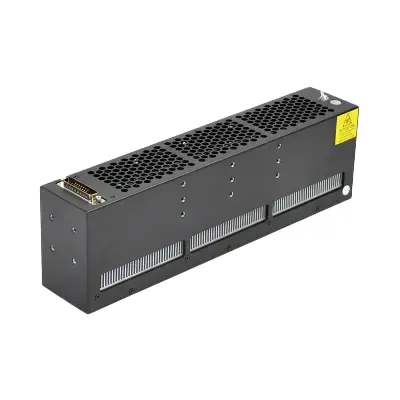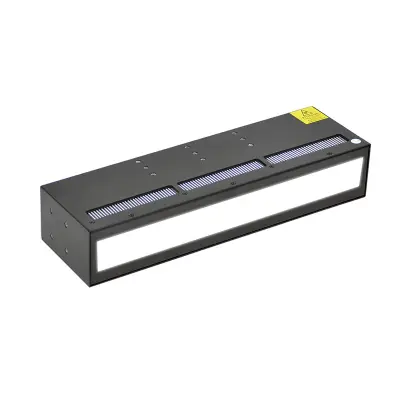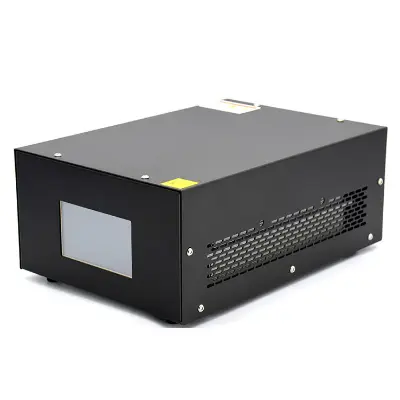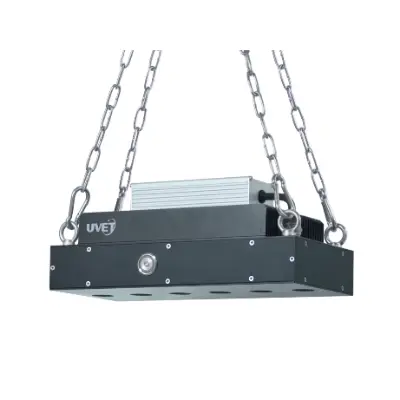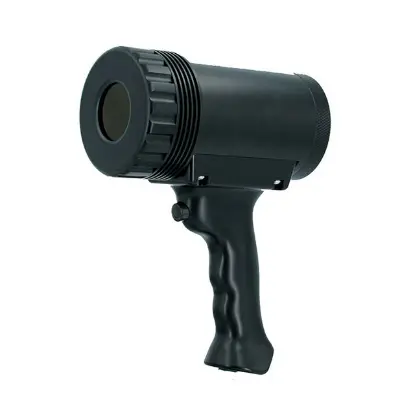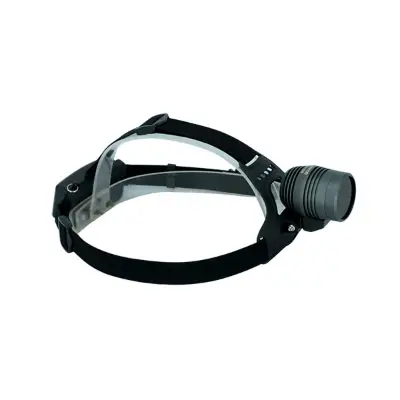UV LED Flood Curing Light
- Model: UVSS-132V2
- Various Sizes
UVET’s UV LED Flood Curing Light features a 280×30mm irradiation area and is equipped with fan cooling for reliable and efficient operation. With optional wavelengths of 365nm, 385nm, 395nm, and 405nm, this curing light is well-suited for a variety of applications. It is an excellent choice for electronic assembly, medical device bonding, optical component bonding, and tasks in the optoelectronics industry, providing uniform and high-performance UV curing across a narrow, extended surface.
Specifications
| Part No. UVSS-132V2 | Wavelength 365nm, Intensity 2500mW/cm2 |
| Part No. UVSE-132V2 | Wavelength 385nm, Intensity 3000mW/cm2 |
| Part No. UVSN-132V2 | Wavelength 395nm, Intensity 3000mW/cm2 |
| Part No. UVSZ-132V2 | Wavelength 405nm, Intensity 3000mW/cm2 |
| Irradiation Area | 280x30mm |
| Heat Dissipation | Fan cooling |
-
Descriptions

The UV LED Flood Curing Light is designed for precise, narrow-area UV curing tasks where accuracy and consistency are essential. With a focused irradiation zone of 280mm × 30mm, this system is well-suited for delicate processes in electronics manufacturing, medical device bonding, optical assembly, and optoelectronics.
Equipped with selectable wavelengths—365nm, 385nm, 395nm, and 405nm—the system supports a wide range of UV-curable adhesives and coatings. This flexibility ensures optimal curing performance across different materials and application scenarios, making it a reliable tool for production environments that require both detail and durability.
A built-in fan cooling mechanism keeps the system at a stable operating temperature even during extended use. This allows for continuous operation without thermal interruptions, ensuring consistent performance and protecting sensitive components from overheating.
Key Features
- Strong fan airflow: Provides reliable cooling to maintain stable operation during long production shifts
- You can start right away: Intuitive controls and simple setup minimize training time and streamline deployment
- Ready for integration: Operates independently or integrates easily into automated manufacturing systems
Why Choose the UV LED Flood Curing Light?
The system's long, narrow curing window allows users to apply UV energy precisely to small or linear surfaces. This is especially beneficial for applications like edge bonding, fiber alignment, sensor assembly, or microfluidic sealing—where overexposure or curing bleed must be avoided.
Selectable wavelengths offer added flexibility. Whether you're working with transparent materials that cure well under 365nm or pigmented adhesives that respond better to 405nm, this system gives you the control to match your process requirements.
Furthermore, the UV LED Flood Curing Light leverages the efficiency of LED technology. It turns on instantly, uses minimal power, and produces little heat. These advantages reduce operational costs and increase safety for both the product and the operator. The long lifespan of the LEDs also means less downtime for maintenance or lamp replacement.
Why Does It Differ from Most?
- Multi-purpose solutions: Tailored for industries that demand precision—electronics, optics, and medical device manufacturing
- Narrow curing (280mm × 30mm): Focused beam ensures exact application without curing adjacent areas
- There are several wavelengths (365nm, 385nm, 395nm, 405nm): Select the best match for your adhesive or resin
- LED technology benefits: Instant activation, low energy use, low heat, and long service life
The UV LED Flood Curing Light provides a dependable solution for small-area, high-accuracy UV curing applications. Whether operating on a benchtop or within a high-speed automated line, it offers the control and consistency needed for advanced manufacturing.
To request detailed specifications, integration support, or a demo, please get in touch with our team. We’re ready to help configure a solution tailored to your curing environment.
-
FAQs

Q1: What is a UV LED Flood Curing Light used for?
A: A UV LED Flood Curing Light is used for wide-area curing of UV-curable adhesives, coatings, and inks in industries such as electronics, printing, automotive, and industrial manufacturing.Q2: What are the benefits of using a UV LED Flood Curing Light?
A: It provides even UV coverage across large surfaces, reduces thermal impact, offers instant on/off operation, consumes less power, and has a long, mercury-free service life.Q3: What wavelengths are available for the UV LED Flood Curing Light?
A: Common wavelengths include 365 nm, 385 nm, 395 nm, and 405 nm, selected based on material compatibility and curing performance.Q4: Can the UV LED Flood Curing Light be integrated into production lines?
A: Yes, it is designed for integration with conveyors, robotic systems, and PLCs, making it ideal for inline or batch production environments.Q5: What maintenance is required for the UV LED Flood Curing Light?
A: Maintenance involves cleaning the optical window, inspecting the cooling system, and verifying UV intensity periodically to ensure optimal performance.
